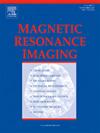The value of multi-parameters MRI based on amide proton transfer imaging in evaluating the efficacy of concurrent radiochemotherapy for locally advanced cervical cancer
IF 2
4区 医学
Q2 RADIOLOGY, NUCLEAR MEDICINE & MEDICAL IMAGING
引用次数: 0
Abstract
Objective
To evaluate the utility of multi-parametric magnetic resonance imaging (MRI) based on amide proton transfer (APT) imaging in assessing the efficacy of concurrent chemoradiotherapy (CCRT) for locally advanced cervical cancer (CC).
Materials and methods
We retrospectively analyzed clinical and imaging data from pathologically confirmed CC patients treated at our hospital between January 2020 and May 2025. All patients underwent conventional MRI, APT imaging, and dynamic contrast-enhanced MRI (DCE-MRI) prior to treatment. Apparent diffusion coefficient (ADC) values, APT values, and semi-quantitative parameters from DCE-MRI were measured. Treatment response following CCRT was evaluated based on the Response Evaluation Criteria in Solid Tumors (RECIST). Complete remission (CR) and partial remission (PR) were classified as the remission group (RG), while stable disease (SD) and progressive disease (PD) were grouped as the non-remission group (NRG). Differences in APT values, ADC values, and semi-quantitative parameters of DCE-MRI between RG and NRG were analyzed. Receiver operating characteristic (ROC) curves were used to assess the sensitivity, specificity, and area under the curve (AUC) of APT, ADC, semi-quantitative parameters of DCE-MRI, and their combinations in predicting CCRT response. The Delong test was used for statistical comparison of AUCs.
Results
A total of 43 patients were included, with 5 (11.63 %) achieving CR, 31 (72.09 %) achieving PR, 5 (11.63 %) classified as SD, and 2 (4.65 %) as PD, resulting in a local control rate of 95.35 %. The APT value in the RG was significantly lower than in the NRG (3.13 % ± 0.24 % vs. 3.36 % ± 0.16 %, P = 0.02), while the ADC value was significantly higher [(0.89 ± 0.11) × 10−3 mm2/s vs. (0.80 ± 0.07) × 10−3 mm2/s, P = 0.034]. The NRG showed significantly higher values in wash-in rate (WIR) compared to the RG (P = 0.035). The AUC of APT in differentiating RG from NRG was higher than that of ADC and WIR, but the differences were not statistically significant (P > 0.05). Moreover, the combined use of APT, ADC, and WIR increased the AUC to 0.893, which was significantly higher than that of WIR alone (P = 0.024).
Conclusion
Multi-parametric MRI based on APT imaging holds promise for predicting CCRT outcomes in locally advanced CC. The combination of APT, ADC, and WIR improves diagnostic accuracy compared to individual parameters, offering a potential non-invasive tool for guiding clinical management after CCRT.
基于酰胺质子转移成像的多参数MRI在评价局部晚期宫颈癌同步放化疗疗效中的价值。
目的:探讨基于酰胺质子转移(APT)成像的多参数磁共振成像(MRI)在评估局部晚期宫颈癌同步放化疗(CCRT)疗效中的应用价值。材料和方法:我们回顾性分析2020年1月至2025年5月在我院治疗的病理证实的CC患者的临床和影像学资料。所有患者在治疗前均接受常规MRI、APT成像和动态对比增强MRI (DCE-MRI)检查。测量DCE-MRI的表观扩散系数(ADC)值、APT值及半定量参数。根据实体肿瘤反应评价标准(RECIST)评估CCRT后的治疗反应。完全缓解组(CR)和部分缓解组(PR)分为缓解组(RG),病情稳定组(SD)和病情进展组(PD)分为非缓解组(NRG)。分析RG与NRG在APT值、ADC值及DCE-MRI半定量参数上的差异。采用受试者工作特征(ROC)曲线评估APT、ADC、DCE-MRI半定量参数及其组合预测CCRT反应的敏感性、特异性和曲线下面积(AUC)。采用Delong检验对auc进行统计学比较。结果:共纳入43例患者,其中CR 5例(11.63 %),PR 31例(72.09 %),SD 5例(11.63 %),PD 2例(4.65 %),局部控制率95.35 %。恰当的值在RG明显低于NRG(3.13 % ±0.24 % 3.36 vs % ±0.16 %,P = 0.02),在ADC值明显高于[(0.89 ±0.11 ) × 三分 平方毫米/秒和(0.80 ±0.07 ) × 三分 平方毫米/ s, P = 0.034]。NRG组的洗入率(WIR)显著高于RG组(P = 0.035)。APT在RG与NRG鉴别中的AUC高于ADC和WIR,但差异无统计学意义(P > 0.05)。此外,APT、ADC和WIR联合使用的AUC为0.893,显著高于单独使用WIR (P = 0.024)。结论:基于APT成像的多参数MRI有望预测局部晚期CC的CCRT结果,与单个参数相比,APT、ADC和WIR的结合提高了诊断准确性,为指导CCRT后的临床管理提供了一种潜在的无创工具。
本文章由计算机程序翻译,如有差异,请以英文原文为准。
求助全文
约1分钟内获得全文
求助全文
来源期刊

Magnetic resonance imaging
医学-核医学
CiteScore
4.70
自引率
4.00%
发文量
194
审稿时长
83 days
期刊介绍:
Magnetic Resonance Imaging (MRI) is the first international multidisciplinary journal encompassing physical, life, and clinical science investigations as they relate to the development and use of magnetic resonance imaging. MRI is dedicated to both basic research, technological innovation and applications, providing a single forum for communication among radiologists, physicists, chemists, biochemists, biologists, engineers, internists, pathologists, physiologists, computer scientists, and mathematicians.
 求助内容:
求助内容: 应助结果提醒方式:
应助结果提醒方式:


